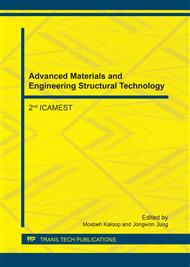p.324
p.330
p.336
p.341
p.346
p.351
p.357
p.363
p.369
Reliability Analysis of Waste Tires Semi-Submersible Breakwater
Abstract:
With the continuous development of social economy, China's port construction scale has become saturated. As an important part of the harbor, the breakwater plays a crucial role in the safety of the working environment in the harbor, and the reliability of the breakwater is an assessment of its safety. Build on the previous studies, this paper puts forward a semi-submersible breakwater using waste tires. The reliability of this breakwater is analyzed by Monte Carlo method of artificial neural network based on Matlab, and the results are compared to those of Direct sampling Monte Carlo method and Important sampling Monte Carlo method. The results show that the Monte Carlo method is able to analyze the reliability of overturning failure of semi-submersible breakwater of waste tire. Compared with the other two consequences, the result is more accurate. The Monte Carlo method of artificial neural network based on Matlab has the obvious advantage in being devoted to the problem of complex structure and variable. Safety of the breakwater meets the relevant requirements and can be applied to the actual engineering. It can be seen that waste tires has a high degree of reliability, daptability, and a wide range of applications.
Info:
Periodical:
Pages:
363-368
Citation:
Online since:
April 2017
Authors:
Keywords:
Price:
Сopyright:
© 2017 Trans Tech Publications Ltd. All Rights Reserved
Share:
Citation:


